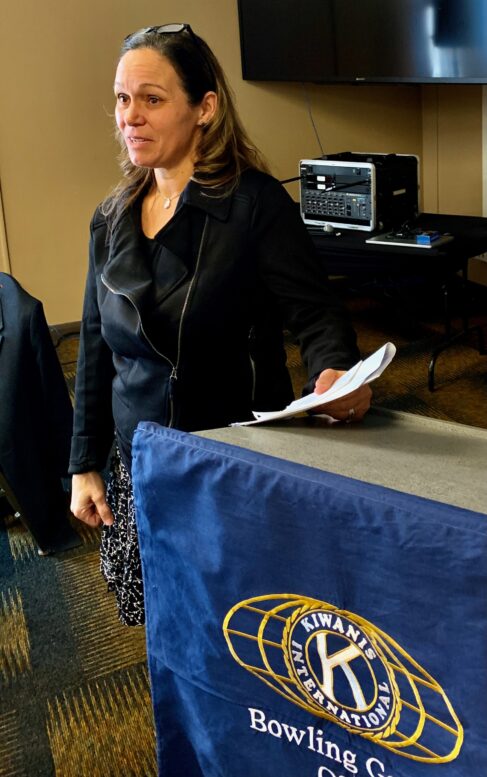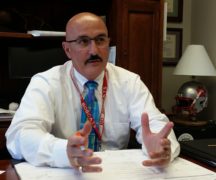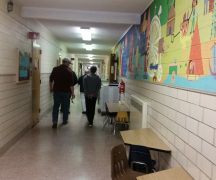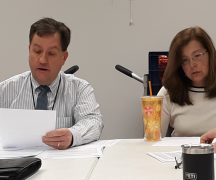By JULIE CARLE
BG Independent News
Monday through Friday Jennifer Hernandez’s preschoolers know her as Ms. Jen. The Conneaut Preschool intervention specialist sometimes also answers to Mom, Grandma or Mimi when her young students forget momentarily who they are talking to.
She knows it’s a badge of honor that they think of her with such love, but then they laugh it off and continue their journey of learning. The best-kept secret is the children often don’t realize the fun they are having is a lesson in disguise.
Hernandez, who was selected as an Inspirational Educator by the Bowling Green Kiwanis Club, recently shared with the Kiwanians a day in the life of Conneaut preschoolers through her eyes as their teacher and cheerleader.
The preschool program at Conneaut, which is one of only two preschools in Bowling Green recognized as a 5-Star Step-Up-To-Quality Preschool program, usually has 16 students in a classroom—eight with a disability and eight who are typically developing.
Children with disabilities are often referred to the program by a pediatrician, daycare provider, early intervention program or their parents, Hernandez said. Children who are typically developing usually enroll after their parents learn about the program by word of mouth.
The children’s days start with a sign-in, which looks different for different students. “Our students are usually between three and five years of age, but developmentally they may range from six months to six years,” she said.
As they sign in first thing, the kids may hold a marker in their hands, or they might get a marker with a giant ball on the end to help them learn how to hold it. Others might be learning how to hold the marker in a tripod grasp, and then some are writing a line, drawing a shape, or writing their first and maybe last names, she said suggesting the range of abilities within the same classroom.
“At this time of year, I have some that I trick with very small words: consonant-vowel-consonant, with words like cat and hat, not c-o-w because that is a different beast,” she said. “I tell them, ‘You can blend those three sounds together,’ and they are tricked into reading them.”
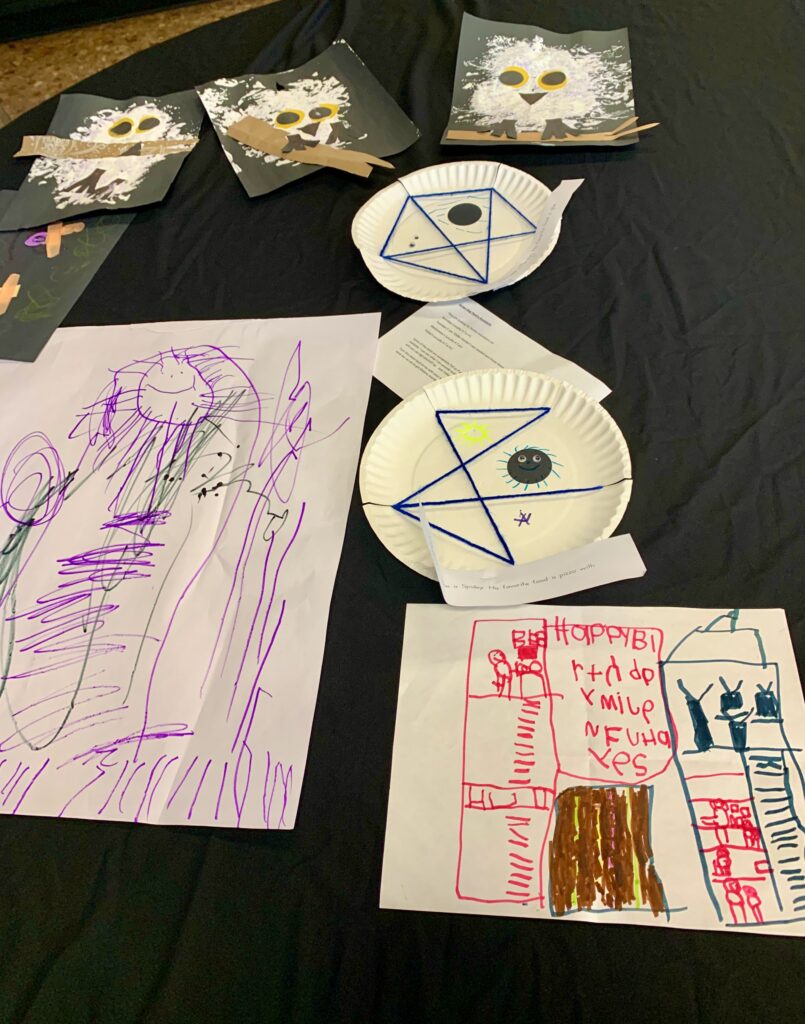
Circle time is used to teach the curriculum that the Board of Education has adopted. Hernandez, who is in her 29th year of teaching preschool, uses activities to work on integrity, foundations, creativity, and reading, which includes reading aloud, reading comprehension, print awareness, concept of print and vocabulary development.
In the circle, they also learn how to sit quietly with their hands in their laps. “Why do we do that?” Hernandez asked, “It’s not just to keep hands off of each other, but to prevent hands from getting stepped on when they walk around.”
Small-group activities come next in the half-day, Monday through Thursday program. Students rotate among three groups with varying activities. Because there is a child with a hearing disability this year, she has incorporated sign language into one of the groups. Led by a paraprofessional who is deaf, the children work on different words and the corresponding signs in American Sign Language, Hernandez said.
“Which by the way, any time you add any type of hand movement or large muscle movement to a word or vocabulary, it sticks a little better,” she added.
Over the years, she has taught students who were blind, deaf or hard of hearing with hearing aids or cochlear implants, multiply-handicapped in wheelchairs, and many with delays in speech, and fine and gross motor skills.
Following outside play time, the students enjoy snack time, but there are lessons to be learned then too. “We eat snacks as a family and learn how to use utensils and manners. … and you have to say please and thank you and learn how to pour yourself,” she said.
At the end of the day, before cleaning and putting things away, the children get to choose their final activity of the day. “We set up different areas of the room and I make sure the activities are something that they will learn from, but also be fun for them,” she said. “We are building walls and playing with cars.”
She sneaks in the last lessons for the day by asking them questions such as, “How many blocks did you put on that wall?” or “What color is that block on the top?” That’s how they play with intention and purpose and do things they don’t know they are learning.
“They are happy, honest and they want to learn. When they figure something out and light up, they are so excited. It changes your life,” she said. “I do this because the children are my joy in a bucket.”

